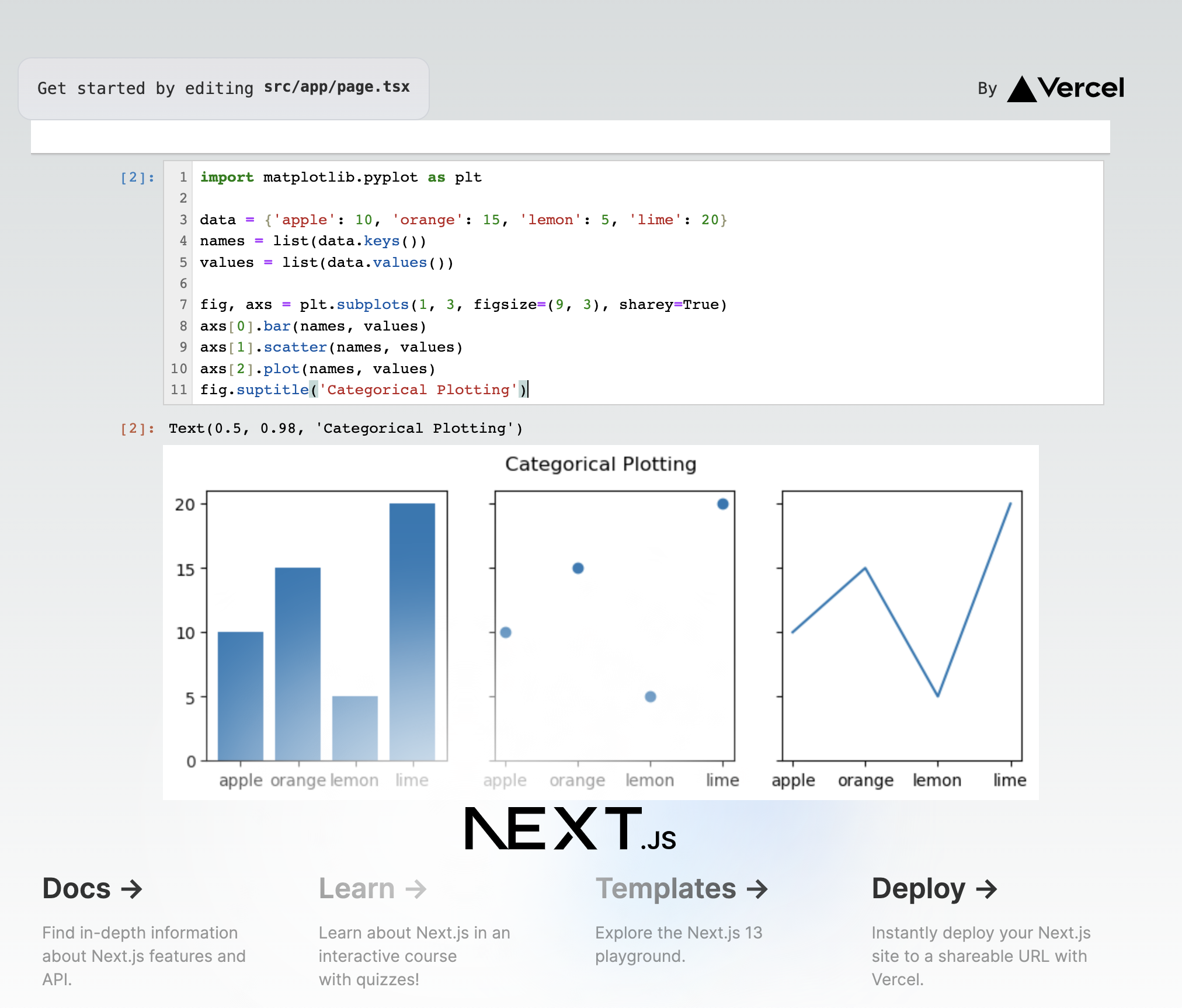Next.js
An example with Next.js is available in this dedicated repository as in this repository folder.
There are a couple of configuration and requirement to run Jupyter React in Next.js.
You need to render in client-mode the Jupyter part. To achieve this, you can e.g. load your page with external components dynamically loaded.
import dynamic from 'next/dynamic'
const HomePageNoSSR = dynamic(
() => import('../components/HomeComponent'),
{ ssr: false }
);
function Home() {
return (
<>
<HomePageNoSSR />
</>
)
}
export default Home
The components should ideally reside outside of the app folder. Add 'use client' at the top of your React.js components.
'use client'
import { Jupyter, Notebook, CellSidebar } from '@datalayer/jupyter-react';
// ...
For IPyWidgets support, you need requirejs on the page, so add a script tag to your layout to load the script from a CDN https://cdnjs.cloudflare.com/ajax/libs/require.js/2.3.4/require.min.js.
import './globals.css'
import Script from 'next/script'
import { Inter } from 'next/font/google'
const inter = Inter({ subsets: ['latin'] })
export const metadata = {
title: 'Create Next App',
description: 'Generated by create next app',
}
export default function RootLayout({
children,
}: {
children: React.ReactNode
}) {
return (
<html lang="en">
<script src="https://cdnjs.cloudflare.com/ajax/libs/require.js/2.3.4/require.min.js" />
<body className={inter.className}>{children}</body>
</html>
)
}
We have seen that Jupyter React components places in the main tag of the default Next.js application are not shown (they have a width of 0).
For now, please place you components outside of the main Next.js CSS.
